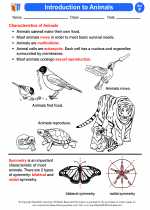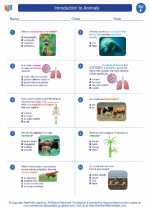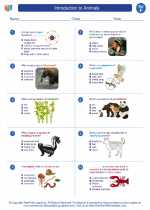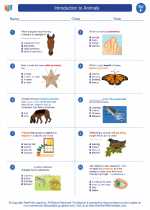Sexual Reproduction
Sexual reproduction is a process in which two parents contribute genetic material to produce a new organism. This process involves the fusion of specialized cells called gametes. In most animals, including humans, the male gamete (sperm) fertilizes the female gamete (egg) to form a new organism.
Key Concepts
- Gametes: These are specialized sex cells produced by each parent. In males, gametes are called sperm, while in females, they are called eggs.
- Fertilization: The process by which the male gamete fuses with the female gamete to form a zygote, which is the first cell of a new organism.
- Variation: Sexual reproduction results in genetic variation in offspring, as each parent contributes a unique set of genes to the new organism.
- Meiosis: This is the cell division process that produces gametes with half the number of chromosomes as the parent cell. It ensures that when the gametes fuse during fertilization, the resulting zygote has the correct number of chromosomes.
- Advantages and Disadvantages: Sexual reproduction allows for genetic diversity, which can be advantageous for species survival. However, it also requires the investment of time and energy in finding a mate and producing gametes.
Study Guide
Here are some key points to remember when studying sexual reproduction:
- Understand the differences between asexual and sexual reproduction.
- Learn the processes of meiosis and fertilization.
- Explore the advantages and disadvantages of sexual reproduction compared to asexual reproduction.
- Discuss the concept of genetic variation and its importance in evolution and species survival.
- Be able to explain the roles of gametes in sexual reproduction.
Remember to review and understand the diagrams and illustrations that depict the processes of sexual reproduction, including meiosis, fertilization, and the formation of zygotes.
By understanding these key concepts and studying the processes involved in sexual reproduction, you will gain a comprehensive understanding of this important biological process.
.◂Science Worksheets and Study Guides Sixth Grade. Introduction to Animals
Study Guide Introduction to Animals
Introduction to Animals  Activity Lesson
Activity Lesson Introduction to Animals
Introduction to Animals  Worksheet/Answer key
Worksheet/Answer key Introduction to Animals
Introduction to Animals  Worksheet/Answer key
Worksheet/Answer key Introduction to Animals
Introduction to Animals  Worksheet/Answer key
Worksheet/Answer key Introduction to Animals
Introduction to Animals  Vocabulary/Answer key
Vocabulary/Answer key Introduction to Animals
Introduction to Animals  Vocabulary/Answer key
Vocabulary/Answer key Introduction to Animals
Introduction to Animals  Vocabulary/Answer key
Vocabulary/Answer key Introduction to Animals
Introduction to Animals  Vocabulary/Answer key
Vocabulary/Answer key Introduction to Animals
Introduction to Animals 

 Activity Lesson
Activity Lesson
 Worksheet/Answer key
Worksheet/Answer key
 Worksheet/Answer key
Worksheet/Answer key
 Worksheet/Answer key
Worksheet/Answer key
 Vocabulary/Answer key
Vocabulary/Answer key
 Vocabulary/Answer key
Vocabulary/Answer key
 Vocabulary/Answer key
Vocabulary/Answer key
 Vocabulary/Answer key
Vocabulary/Answer key

The resources above cover the following skills:
LIFE SCIENCE
From Molecules to Organisms: Structures and Processes